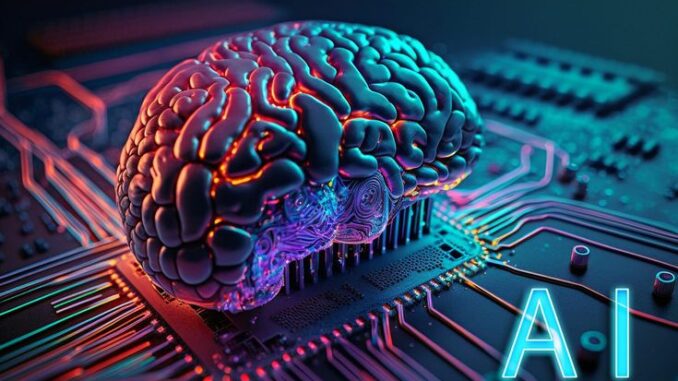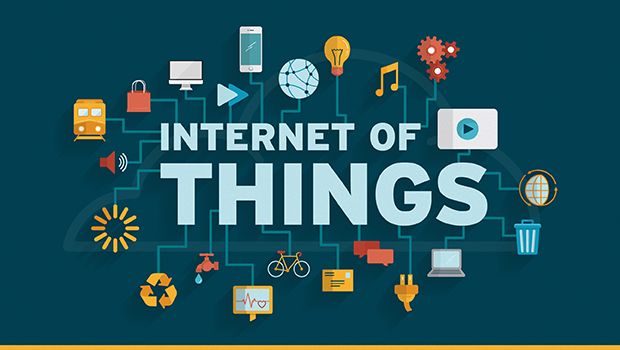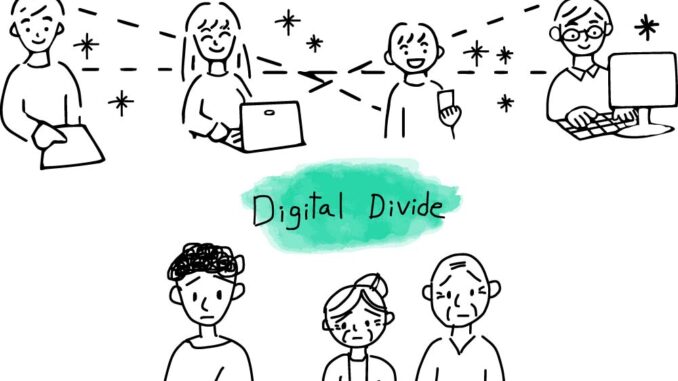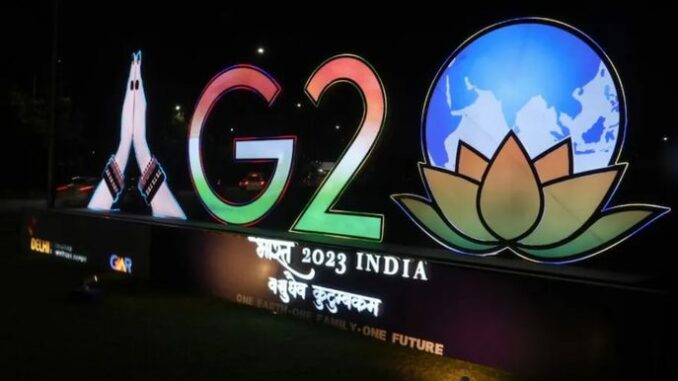
- Digital India is a flagship programme of the Government of India that aims to empower every citizen with digital access to information, services, benefits, and good governance.
- According to a report by McKinsey Global Institute, India can create up to $1 trillion of economic value from the digital economy in 2025, up from around $200 billion currently. This would represent a five-fold increase in digital transformation by 2025.
- The report identifies 30 digital themes that can be scaled up nationally to accelerate progress in nine priority areas: financial inclusion, agriculture, education, healthcare, logistics, e-governance, jobs and skills, energy and environment, and women’s empowerment.
How digital technologies are transforming various sectors of the economy and society
Some of the examples of how digital technologies are transforming various sectors of the economy and society are:
-
- AI: Artificial intelligence is being used to improve the efficiency and quality of various services and processes, such as crop yield prediction, fraud detection, tax compliance, healthcare diagnosis, customer service, etc. AI can also help in creating new products and services, such as voice assistants, chatbots, smart speakers, etc. AI can potentially add $957 billion to India’s GDP by 2035.

Artificial Intelligence (AI) - IoT: Internet of Things is the network of physical devices that are embedded with sensors, software, and connectivity that enable them to collect and exchange data with each other and with other systems. IoT can help in creating smart and automated systems that can improve efficiency, convenience, safety, and quality of life. Some examples of IoT applications are smart homes, smart cities, smart agriculture, smart healthcare, smart manufacturing, and smart transportation.

Internet Of Things (IoT) - Blockchain: Blockchain is a distributed ledger technology that enables secure and transparent transactions without intermediaries. Blockchain can help in enhancing trust, security, and efficiency in various domains, such as banking, supply chain management, land records, voting systems, digital identity management, etc. Blockchain can potentially add $5 billion to India’s GDP by 2024.
- Cybersecurity: Cybersecurity is the protection of digital systems and data from unauthorized access or attack. Cybersecurity is essential for ensuring the safety and privacy of citizens and businesses in the digital economy. Cybersecurity can also help in preventing cybercrimes, such as hacking, phishing, ransomware, identity theft, etc. Cybersecurity can potentially create 1 million jobs in India by 2025.

Cybersecurity
- AI: Artificial intelligence is being used to improve the efficiency and quality of various services and processes, such as crop yield prediction, fraud detection, tax compliance, healthcare diagnosis, customer service, etc. AI can also help in creating new products and services, such as voice assistants, chatbots, smart speakers, etc. AI can potentially add $957 billion to India’s GDP by 2035.
How Digital India is creating new opportunities for innovation and entrepreneurship
- Digital India is also creating new opportunities for innovation and entrepreneurship in the country. According to a report by Nasscom, India has the third-largest startup ecosystem in the world with over 9,300 tech startups as of 2018. These startups are creating solutions for various social and economic problems using digital technologies. Some of the successful examples are Flipkart (e-commerce), Ola (ride-hailing), Paytm (digital payments), Zomato (food delivery), Byju’s (online education), etc.
How Digital India is enabling the empowerment and inclusion of citizens
- Digital India is also enabling the empowerment and inclusion of citizens from all segments of society. According to a report by IAMAI, India has nearly half a billion internet users as of 2018. The report also states that India has the second-largest rural internet user base in the world with 200 million users as of 2018. Digital India is providing access to various services and benefits to citizens through platforms such as Aadhaar (unique identity), UPI (unified payments interface), DigiLocker (digital document storage), PMJDY (financial inclusion scheme), etc.

UPI (Unified Payments Interface)
How Digital India is improving the quality and transparency of governance
- Digital India is also improving the quality and transparency of governance in the country. According to a report by EY, India ranks among the top 20 countries in the world in terms of e-government development index as of 2018. The report also states that India has saved over $10 billion by using digital technologies for governance reforms such as DBT (direct benefit transfer), GST (goods and services tax), GeM (government e-marketplace), etc.
Challenges and risks for achieving the full potential of Digital India
Digital India is a visionary programme that has the potential to transform the economy and society of the country with the rapid adoption of digital technologies. However, there are also some challenges and risks that need to be addressed for achieving its full potential. Some of these are:
-
- Digital divide: There is still a significant gap between urban and rural areas in terms of digital access and literacy. There is also a gender gap in terms of internet usage and participation. There is a need to ensure universal and affordable access to high-speed internet and digital devices for all citizens. There is also a need to enhance digital literacy and skills among citizens to enable them to use digital technologies effectively.

Digital Divide - Data privacy: As more data is generated and collected by various digital platforms and applications, there is a need to ensure the privacy and security of personal and sensitive data of citizens and businesses. There is a need to have a robust legal and regulatory framework for data protection and governance that balances the interests of data owners, users, and providers. There is also a need to create awareness and trust among citizens and businesses about their data rights and responsibilities.
- Cybersecurity: As more systems and processes become digital and interconnected, there is a need to ensure the resilience and security of digital infrastructure and networks from cyberattacks and threats. There is a need to have a comprehensive and coordinated strategy for cybersecurity that covers prevention, detection, response, and recovery. There is also a need to develop a skilled and capable workforce for cybersecurity that can meet the growing demand and challenges.
- Ethical and social implications: As digital technologies become more pervasive and powerful, there is a need to ensure that they are used in an ethical and responsible manner that respects the values and norms of society. There is a need to have a dialogue and consensus among various stakeholders on the ethical and social implications of digital technologies such as AI, IoT, blockchain, etc. There is also a need to have a framework for accountability and governance for digital technologies that ensures fairness, transparency, and accountability.
- Digital divide: There is still a significant gap between urban and rural areas in terms of digital access and literacy. There is also a gender gap in terms of internet usage and participation. There is a need to ensure universal and affordable access to high-speed internet and digital devices for all citizens. There is also a need to enhance digital literacy and skills among citizens to enable them to use digital technologies effectively.
Conclusion
- Digital India is a game-changing programme that can create tremendous economic value and social impact for the country. However, it also requires a collaborative and coordinated effort from all stakeholders, including the government, the private sector, the civil society, and the citizens. Together, we can make India a global leader in the digital economy and a digitally empowered society.

Leave a Reply